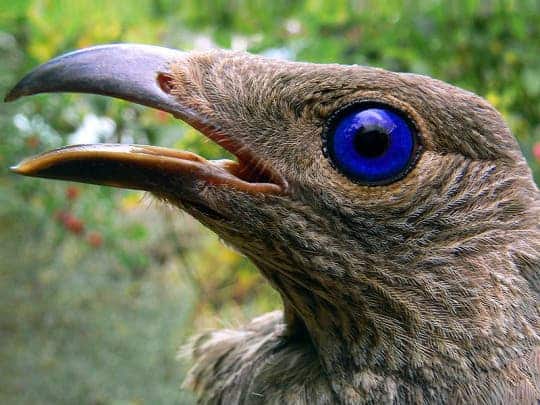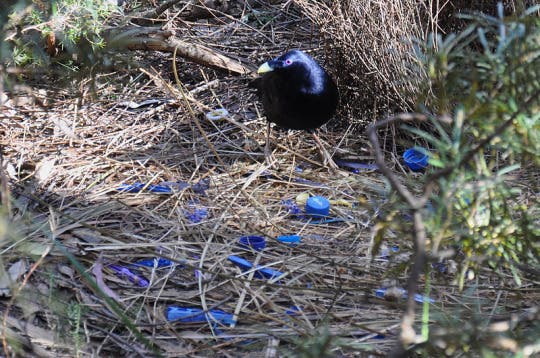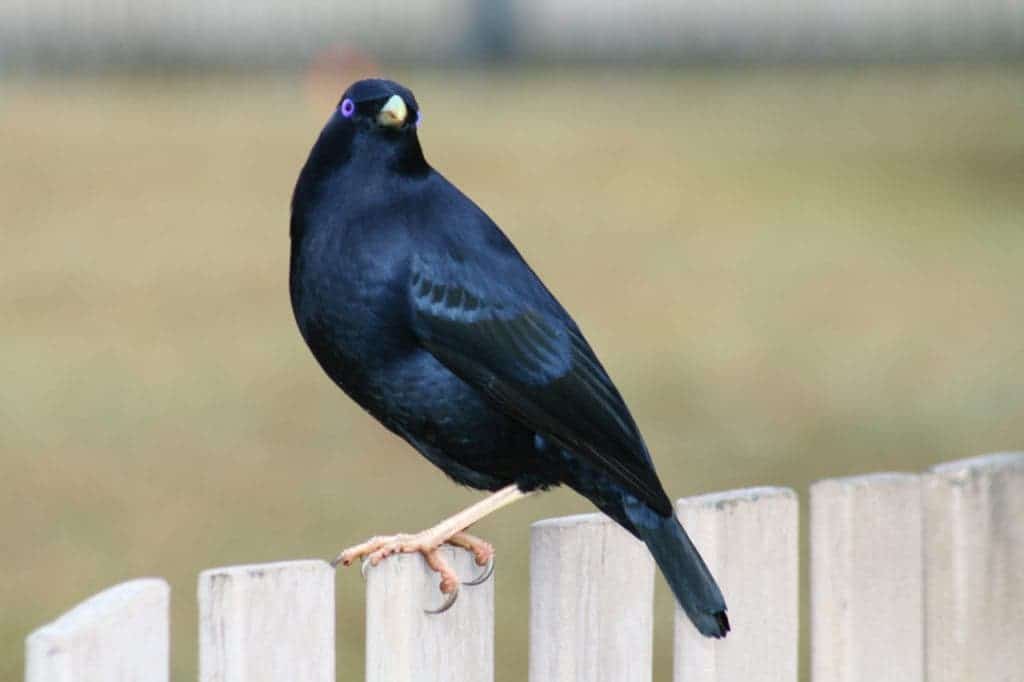
Endemic to Australia and New Zealand, the satin bowerbird is considered one of the most intelligent birds found in nature. Mature males are very easy to spot because of their bright blue eyes, while their bodies are uniformly covered in black, although sometimes light diffraction makes the bird’s feathers turn almost into a metallic sheen. What sets these birds apart is their remarkable courtship ritual, and the male’s seemingly obsessive fixation for blue.

When not foraging for food, the male bowerbird is mostly busy building intricate mating grounds called ‘bowers’ out of twings, berries, flowers and feathers. It then decorates the bower with saliva, charcol and any objects it can find. If it’s around humans, the bowerbird will often steal anything blue to make his love avenue. Typically, blue plastic caps, straws or clothing get collected by the male, then stitched together in a pattern that only the bird seems to know. It’s worth mentioning that only dominant males build bowers, and sometimes other males in the vicinity might drop by and look after the bower like a caretaker. They may not use it though for conjugal affairs.

When his satisfied with his bower and females are nearby, the blue-eyed male praces and struts around his avenue. He then tries to woo the female by offering her all sorts of objects, all while making weird hissing, chattering noises. This incredible National Geographic program embedded below shows for instance a male bowerbird courting a female using a blue ring, most likely from some plastic bottle. If the female is pleased, she will mate with the male in the bower.
The bowers aren’t nests, though. Only the female builds a nest – a shallow, saucer-shaped construction of twigs and dry leaves, placed 10-15 m above the ground in the upright outer branches of a tree. The nest is lined with fine dry leaves, where the female lays one to three eggs, which she incubates. She then raises the young on her own, because the male is … you know… busy with his bachelor pad.



